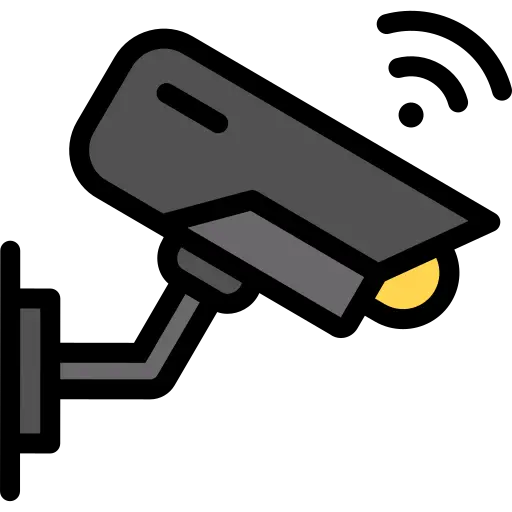The Top 5 IoT Security Risks
We’re all becoming more reliant on technology, and the internet of things (IoT) is an essential component of that. Below we are going to elaborate on the IoT Security Risks that are critical to be aware of.
Experts predict that by the end of 2022, the globe will have more than 14 billion linked IoT devices, a figure that will only rise in 2023.
At the same time, the worldwide consumer IoT market is predicted to rise at a CAGR of 17.39% to $104.4 billion by 2023.
This network of physical items, from wearables to autos, reshapes how we live and work.
However, as the Internet of Things expands, so do the threats to its security. With so much at stake, it’s critical to be aware of the top IoT security risks so you can take preventative measures.

Here are the top 5 IoT Security Risks that one can face in recent days:
1. Unsecured Devices
It is a significant concern when it comes to IoT security. You see, many IoT devices are manufactured without basic security features, such as robust passwords and encryption, which makes them a juicy target for hackers and cybercriminals. And, unfortunately, once these devices are compromised, they can be used as a launching pad for further attacks on the network. This is why ensuring that your IoT devices are properly secured with strong passwords and encryption is crucial to protect against malicious activity. So, if you’re looking to beef up your IoT security, make sure to prioritize the safety of your devices!

Here are a few points on the issue of unsecured devices in IoT security:
- Lack of Authentication: Many IoT devices do not have proper authentication mechanisms, allowing anyone to access them and potentially exploit vulnerabilities.
- No Encryption: Data transmitted from or to an IoT device is often unencrypted, making it easy for attackers to intercept and steal sensitive information.
- Poor Password Management: IoT devices often come with weak or easily guessable passwords, which can be easily cracked by hackers.
- Example: In 2016, the “Mirai” malware infected and took control of hundreds of thousands of unsecured IoT devices, such as security cameras and home routers, to launch a massive Distributed Denial of Service (DDoS) attack on the internet infrastructure.
2. Weak Network Security
Weak Network Security is a common problem when it comes to IoT security. You see, many IoT devices are connected to networks, often relying on Wi-Fi, which can be vulnerable to hacking. This creates an opening for cybercriminals to access sensitive data and even take control of the devices themselves!

Here are a few bullet points to further elaborate on this issue:
- Inadequate Network Protection: IoT devices often do not have proper network security measures in place, making it easy for attackers to breach the network and gain access to connected devices.
- Lack of Encryption: Wi-Fi networks used by IoT devices may not be properly encrypted, allowing unauthorized access and interception of sensitive data.
- Example: In 2018, the Krack vulnerability was discovered, which allowed attackers to intercept Wi-Fi traffic and access sensitive data transmitted over unsecured Wi-Fi networks.
3. Inadequate Software Updates
Inadequate Software Updates are a challenge when it comes to IoT security. You see, many IoT devices have poor update processes, making it hard to keep the device software up-to-date and secure. This can leave vulnerabilities unpatched, making the devices an easy target for cyber attacks.
Here are a few bullet points to elaborate further on this issue:
- Slow or Non-Existent Updates: IoT devices may not receive updates frequently or at all, leaving vulnerabilities unpatched for long periods of time.
- Lack of Automatic Updates: IoT devices may not have the ability to receive automatic updates, requiring manual intervention to keep the device software current.
- Example: In 2016, the Mirai malware infected many IoT devices that were running outdated software, as the devices did not receive updates to patch vulnerabilities.
4. Insufficient Privacy Protections
Insufficient Privacy Protections are a real concern when it comes to IoT security. You see, many IoT devices collect and store sensitive personal data, such as location information, health data, and financial information. If the device is not properly secured, this sensitive information can be vulnerable to theft or misuse.

Here are a few bullet points to elaborate further on this issue:
- Lack of Encryption: Personal data stored on IoT devices may not be properly encrypted, making it easily accessible to unauthorized individuals.
- No Access Controls: IoT devices may not have proper access controls in place, allowing anyone to access and potentially misuse the personal data stored on the device.
- Example: In 2018, the privacy of millions of smart home device users was compromised when a database containing sensitive personal information was left unsecured and accessible on the internet.
5. Lack of Device Management
Lack of Device Management is a significant challenge in the world of IoT security. You see, many IoT devices are not properly managed, which can lead to vulnerabilities going unnoticed and unpatched. This makes the devices a risk to the entire network they are connected to.

Here are a few bullet points to elaborate further on this issue:
- No Monitoring: IoT devices may not be monitored for security vulnerabilities, making it difficult to detect and address potential risks.
- Poor Inventory Management: There may be a lack of visibility into the types of IoT devices connected to a network, making it hard to identify and manage potential vulnerabilities.
- Example: In 2016, a large-scale Distributed Denial of Service (DDoS) attack was carried out using a botnet of insecure IoT devices. This attack was made possible due to the lack of device management and monitoring for these devices.
To effectively manage the security of IoT devices, it’s important to have proper device management in place. This includes monitoring for security vulnerabilities, maintaining an inventory of connected devices, and implementing measures to address potential risks. By taking a proactive approach to device management, you can help ensure the overall security of your IoT ecosystem.
For more elaboration on IoT in the Home refer to our post here. Also if you are interested in further reading about The Intersection of IoT and AI read it here.







